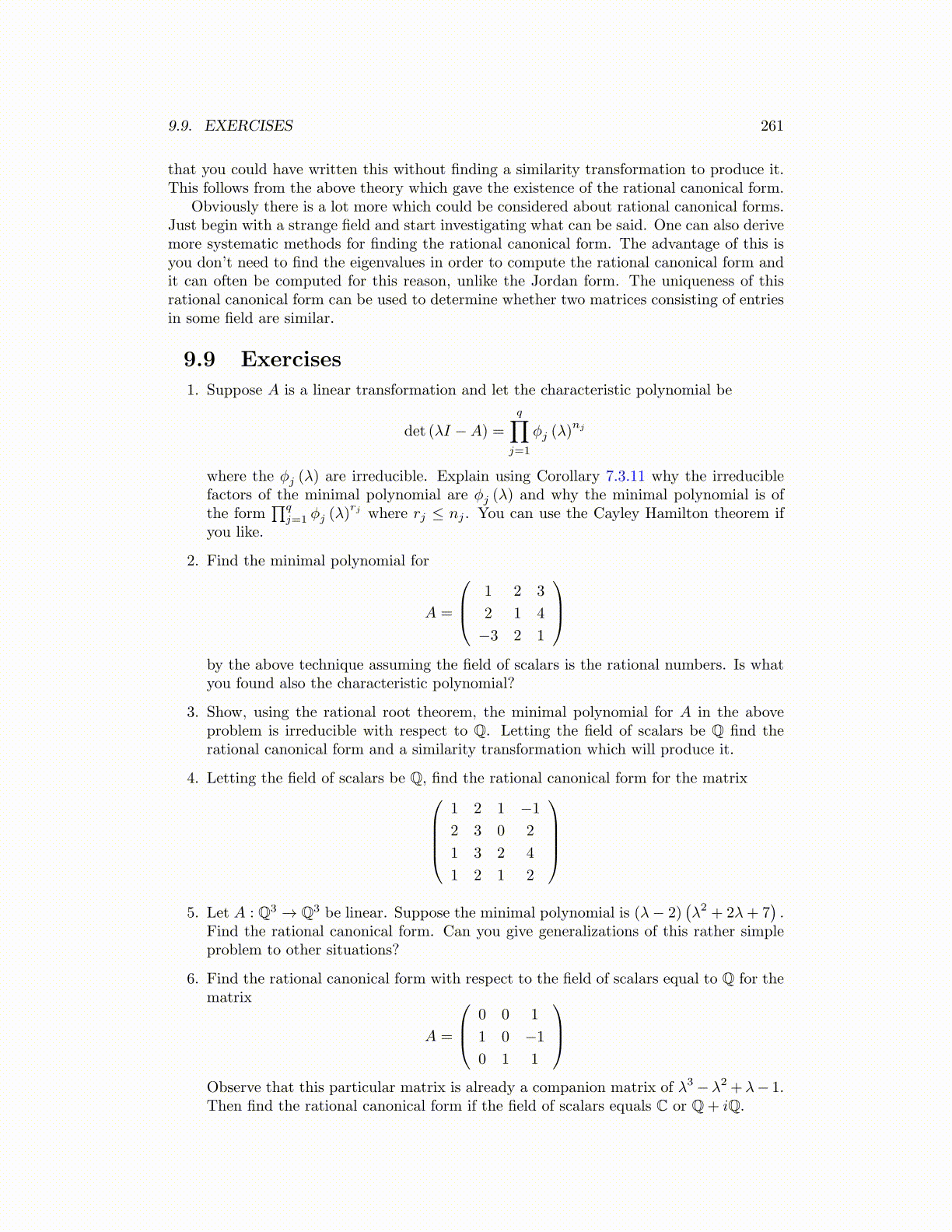
9.9. EXERCISES 261
that you could have written this without finding a similarity transformation to produce it.This follows from the above theory which gave the existence of the rational canonical form.
Obviously there is a lot more which could be considered about rational canonical forms.Just begin with a strange field and start investigating what can be said. One can also derivemore systematic methods for finding the rational canonical form. The advantage of this isyou don’t need to find the eigenvalues in order to compute the rational canonical form andit can often be computed for this reason, unlike the Jordan form. The uniqueness of thisrational canonical form can be used to determine whether two matrices consisting of entriesin some field are similar.
9.9 Exercises
1. Suppose A is a linear transformation and let the characteristic polynomial be
det (λI −A) =
q∏j=1
ϕj (λ)nj
where the ϕj (λ) are irreducible. Explain using Corollary 7.3.11 why the irreduciblefactors of the minimal polynomial are ϕj (λ) and why the minimal polynomial is ofthe form
∏qj=1 ϕj (λ)
rj where rj ≤ nj . You can use the Cayley Hamilton theorem ifyou like.
2. Find the minimal polynomial for
A =
1 2 3
2 1 4
−3 2 1
by the above technique assuming the field of scalars is the rational numbers. Is whatyou found also the characteristic polynomial?
3. Show, using the rational root theorem, the minimal polynomial for A in the aboveproblem is irreducible with respect to Q. Letting the field of scalars be Q find therational canonical form and a similarity transformation which will produce it.
4. Letting the field of scalars be Q, find the rational canonical form for the matrix1 2 1 −1
2 3 0 2
1 3 2 4
1 2 1 2
5. Let A : Q3 → Q3 be linear. Suppose the minimal polynomial is (λ− 2)
(λ2 + 2λ+ 7
).
Find the rational canonical form. Can you give generalizations of this rather simpleproblem to other situations?
6. Find the rational canonical form with respect to the field of scalars equal to Q for thematrix
A =
0 0 1
1 0 −1
0 1 1
Observe that this particular matrix is already a companion matrix of λ3 − λ2 + λ− 1.Then find the rational canonical form if the field of scalars equals C or Q+ iQ.